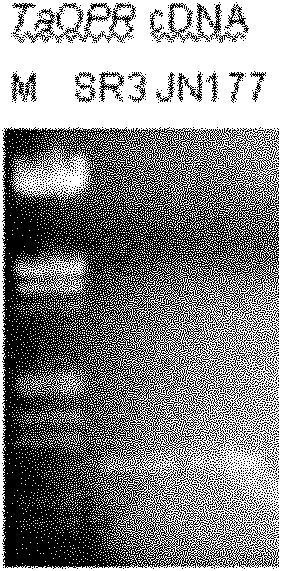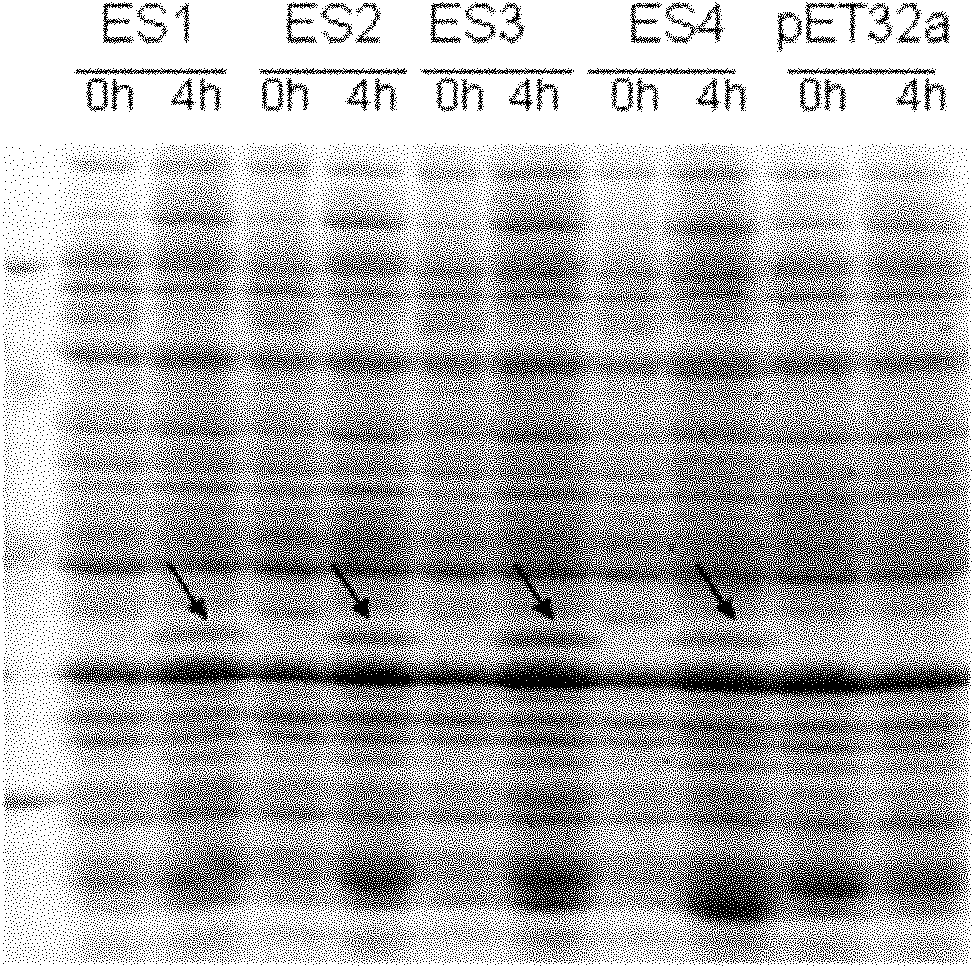Wheat salt-tolerant gene TaOPR and application thereof
A wheat salt-tolerant gene and gene technology, applied in the direction of DNA/RNA fragments, the use of vectors to introduce foreign genetic material, recombinant DNA technology, etc., can solve the problems that the role of OPR genes has not been reported, and achieve the effect of improving salt tolerance
- Summary
- Abstract
- Description
- Claims
- Application Information
AI Technical Summary
Problems solved by technology
Method used
Image
Examples
Embodiment 1
[0030] Embodiment 1, TaOPR clone
[0031] 1.1 Extraction of wheat Total RNA
[0032] 1. Put the tissue material into a liquid nitrogen pre-cooled mortar, and fully grind it into powder in liquid nitrogen;
[0033] 2. After the liquid nitrogen has evaporated, transfer it to a 2ml centrifuge tube immediately, add about 1ml of Invitrogen’s TRIzol extract for every 100mg of material, after melting, repeatedly suck and blow with a sample gun, shake and mix the sample vigorously, and make the sample Fully lyse and place at room temperature for 5 minutes;
[0034] 3. Add 0.2ml of chloroform (chloroform), vigorously shake and mix for 15 seconds, and place at room temperature for 10 minutes;
[0035] Centrifuge at 12000 rpm for 15 minutes at 4.4°C;
[0036] 5. Carefully suck out the upper aqueous phase with a pipette, add it to a new 1.5ml centrifuge tube, add 500 μl of isopropanol (1:1 volume), mix well, and settle at -20°C for 30 minutes or overnight;
[0037] 6.4°C, centrifuge ...
Embodiment 2
[0093] Embodiment 2, prokaryotic expression analysis
[0094] 2.1 Construction of prokaryotic expression vector
[0095] The expression vector used was Pet32a, and the recipient strain was DE3. select Hin d III and Eco RI performed double digestion on pET32a and the pMD18-T vector containing the target gene respectively, recovered the large fragment of the vector and the small fragment of the target gene, and used T 4 After ligation with DNA ligase, the competent cells of E. coli DH10B were transformed. After the recombinant was identified, the prokaryotic expression vector with the target gene was obtained, and then the recipient strain BL21 (DE3) was transformed into competent cells for protein expression.
[0096] 1. Digestion of pET32a and pMD18-T
[0097] Extract the plasmids of pET32a and pMD18-T by alkaline lysis method, take 10ul each for Hin dIII and Eco RI double enzyme digestion. The plasmid extraction method is as above, and the plasmid double enzyme di...
Embodiment 3
[0160] Embodiment 3, construction of plant expression vector (35S promoter)
[0161] 3.1 Construction of 35S promoter plant expression vector
[0162] Using the plant expression vector pSTART, select Sac I and Bam HI performed double enzyme digestion on pSTART and the pMD18-T vector containing the target gene respectively, and recovered the large fragment of the vector and the small fragment of the target gene respectively. 4 After ligation with DNA ligase, the competent cells of Escherichia coli DH10B were transformed, and the plant expression vector with the target gene was obtained after the recombinant was identified.
[0163] (1) Plasmid pSTART empty vector and pMD18-T Sac I and Bam HI double enzyme digestion
[0164] Extract pSTART empty vector and pMD18-T plasmid by alkaline lysis method, take 10 μg of each for enzyme digestion, and the enzyme digestion system is as follows:
[0165] Bam HI 1μl
[0166] Sac I 1μl
[0167] pSTART vector / pMD18-T plasmid 1...
PUM
 Login to View More
Login to View More Abstract
Description
Claims
Application Information
 Login to View More
Login to View More - R&D
- Intellectual Property
- Life Sciences
- Materials
- Tech Scout
- Unparalleled Data Quality
- Higher Quality Content
- 60% Fewer Hallucinations
Browse by: Latest US Patents, China's latest patents, Technical Efficacy Thesaurus, Application Domain, Technology Topic, Popular Technical Reports.
© 2025 PatSnap. All rights reserved.Legal|Privacy policy|Modern Slavery Act Transparency Statement|Sitemap|About US| Contact US: help@patsnap.com



